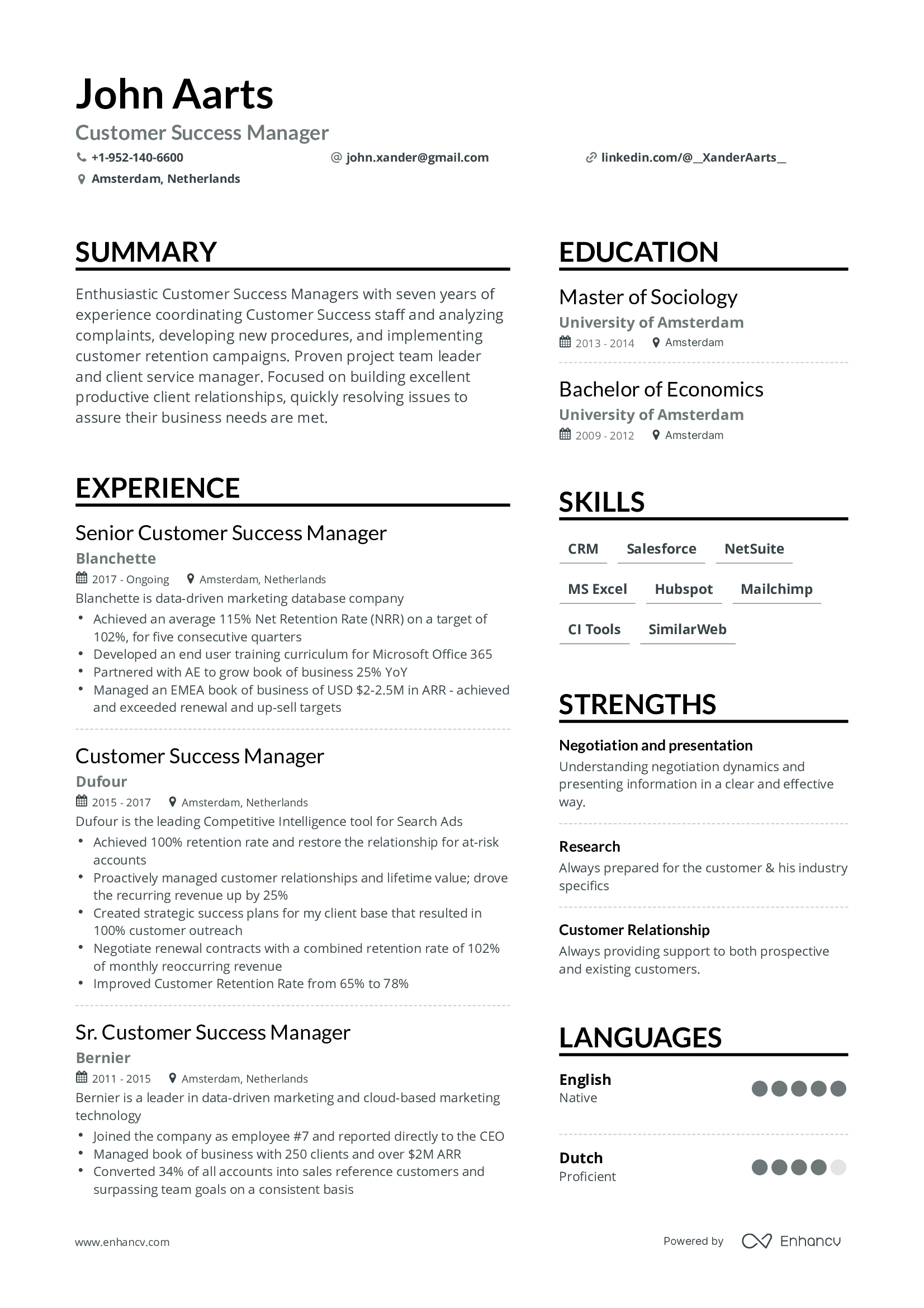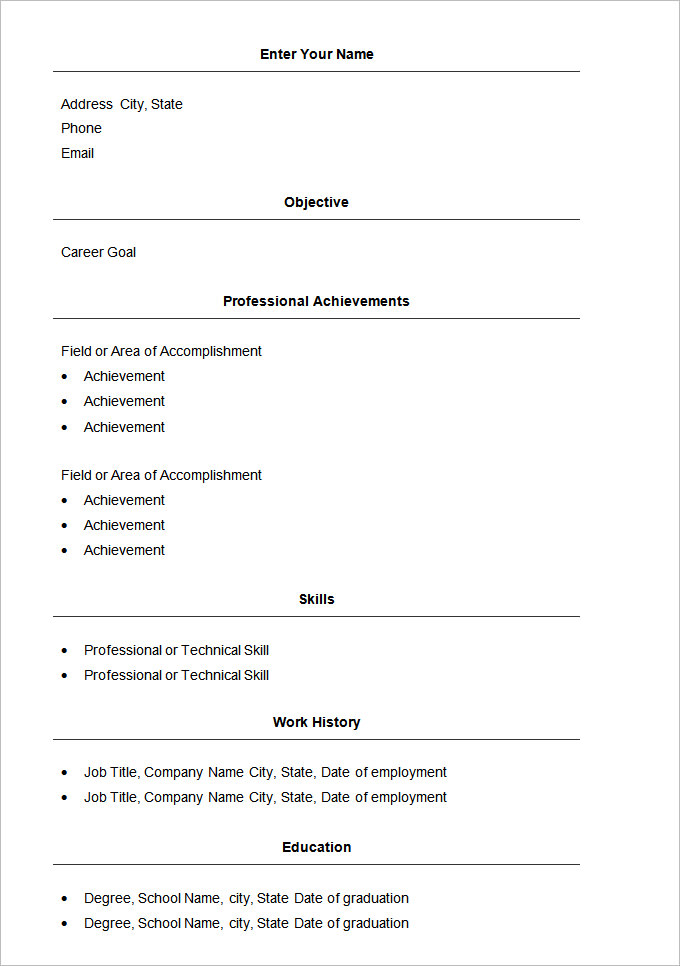The Simple and Best Resume Format That Will Get You a Job
Landing your dream job starts with a powerful tool: your resume. But with so many formats and templates available, knowing which one will truly impress recruiters can feel overwhelming. Don’t worry! This article cuts through the noise and reveals the simple, yet effective, resume format that consistently delivers results, helping you stand out from the crowd and secure that coveted interview.
This guide will walk you through the best resume format, covering essential sections, formatting tips, and how to tailor your resume for maximum impact. Let’s get started!
Why Format Matters: Understanding the Applicant Tracking System (ATS)
Before diving into the specific format, it’s crucial to understand the role of Applicant Tracking Systems (ATS). Most companies use ATS to scan resumes for keywords and filter out unqualified candidates. A poorly formatted resume can be rejected before a human even lays eyes on it. That’s why choosing the right format is critical.
The best resume format for navigating ATS and showcasing your skills is the reverse-chronological format.
The Reverse-Chronological Resume: The Gold Standard
The reverse-chronological format is the most widely recognized and preferred resume format. It’s straightforward, easy to read, and ATS-friendly. This format focuses on your work history, highlighting your accomplishments and career progression in a clear and concise manner.
Here’s a breakdown of the key sections and how to structure them:
1. Contact Information
- Name: Use a professional font size (e.g., 16-20pt) and make it stand out.
- Phone Number: Provide a current and easily accessible number.
- Email Address: Use a professional email address (e.g., firstname.lastname@email.com). Avoid nicknames or unprofessional handles.
- LinkedIn Profile URL: Include a customized LinkedIn URL. (Edit your profile to create a clean, easy-to-share link.)
- Optional: Consider adding a professional website or portfolio link if relevant to the job.
2. Summary/Objective (Choose Wisely)
- Summary: (Recommended for experienced professionals) A brief paragraph (3-4 sentences) that highlights your key skills, experience, and career goals. Tailor it to the specific job description.
- Objective: (Suitable for entry-level candidates or career changers) A concise statement (1-2 sentences) that outlines your career aspirations and what you hope to achieve in the role.
3. Work Experience
This is the heart of your resume. List your work history in reverse-chronological order (most recent job first). For each position:
Job Title: Use the official job title.
Company Name: Include the company name and location.
Dates of Employment: Use month and year (e.g., June 2020 – Present).
Responsibilities and Accomplishments: Use bullet points to describe your duties and, most importantly, your achievements. Quantify your accomplishments whenever possible (e.g., “Increased sales by 15%,” “Managed a team of 10 employees”). Use action verbs to start each bullet point.
- Action Verbs: Examples include: Managed, Led, Developed, Implemented, Created, Improved, Increased, Achieved, Resolved, Designed, Analyzed, Coordinated.
4. Education
- Degree Name: Include your degree (e.g., Bachelor of Science in Marketing).
- University Name: Include the university name and location.
- Graduation Date: Use month and year (or expected graduation date).
- Optional: Include your GPA (if above 3.5), relevant coursework, honors, and awards.
5. Skills
- Hard Skills: Technical skills relevant to the job (e.g., software proficiency, coding languages, data analysis).
- Soft Skills: Interpersonal skills (e.g., communication, teamwork, problem-solving).
- Keywords: This is where you incorporate keywords from the job description. Carefully review the posting and include relevant skills. Create a ‘Skills’ section and list your skills in a concise, bulleted format.
Formatting Best Practices for ATS Compatibility and Readability
- Font: Use a clean, professional font like Arial, Calibri, or Times New Roman (size 10-12pt).
- Margins: Maintain 1-inch margins on all sides.
- Line Spacing: Use single or 1.15 line spacing for easy reading.
- File Format: Save your resume as a .DOCX (Word document) or .PDF file. PDF is generally preferred as it preserves formatting across different devices. Always check the job posting for preferred file types.
- Avoid: Graphics, tables, images, and complex formatting, which can confuse ATS.
- Proofread: Carefully proofread your resume for any typos or grammatical errors. Have someone else review it too!
Tailoring Your Resume to Each Job
The most effective resume is tailored to the specific job you are applying for.
- Read the Job Description Carefully: Identify the key skills, experience, and keywords the employer is looking for.
- Customize Your Summary/Objective: Highlight the most relevant skills and experience.
- Adjust Your Skills Section: Prioritize the skills that match the job requirements.
- Focus on Relevant Experience: Emphasize the accomplishments that are most relevant to the role.
Conclusion: Your Resume - Your Gateway to Opportunity
By adopting the reverse-chronological format, focusing on clear language, quantifying your achievements, and tailoring your resume to each job application, you’ll significantly increase your chances of getting noticed by employers. Follow these guidelines, and you’ll be well on your way to landing that job interview and taking the next step in your career! Your resume is your first impression; make it count!
Frequently Asked Questions (FAQs)
1. What is the best file format to save my resume?
Generally, saving your resume as a .PDF (Portable Document Format) is recommended as it preserves the formatting across different devices. However, always check the job posting for any specific file format requirements.
2. How long should my resume be?
For most professionals, a one-page resume is sufficient. However, if you have extensive experience (10+ years), a two-page resume may be acceptable. Ensure that every detail is relevant and contributes to your application.
3. Should I include a cover letter?
Yes, a cover letter is often a valuable addition. It allows you to elaborate on your qualifications, express your enthusiasm for the role, and highlight how your skills and experience align with the company’s needs.
4. How often should I update my resume?
Regularly review and update your resume, at least every six months, or whenever you gain new skills, accomplishments, or experience. Always update it before applying for a job.
5. Is it okay to use a resume template?
You can use a resume template as a starting point, but avoid heavily stylized templates that can be difficult for ATS to read. Focus on the content and ensure the template is clean, readable, and easily customizable.




